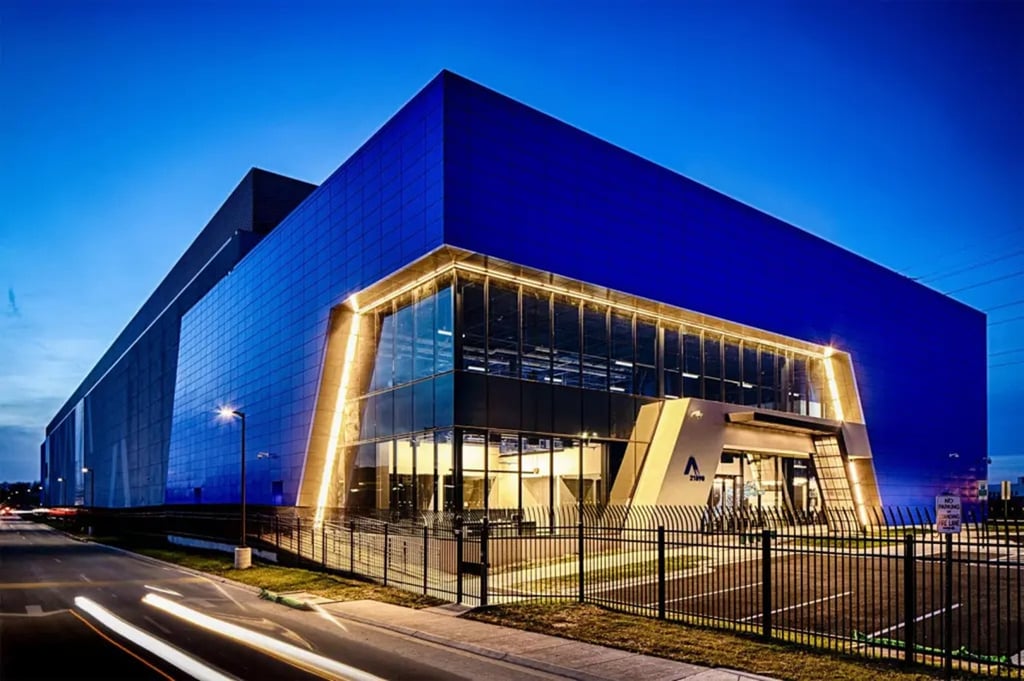Intel has been under massive pressure of late with the move from traditional PCs to tablets and smartphones catching them somewhat unprepared. However, this trend toward mobile devices doesn’t just affect the client side, it affects the network side as well. And here Intel may have an offsetting cost advantage. You see, networking hardware hasn’t […]
Datamation content and product recommendations are
editorially independent. We may make money when you click on links
to our partners.
Learn More
Intel has been under massive pressure of late with the move from traditional PCs to tablets and smartphones catching them somewhat unprepared. However, this trend toward mobile devices doesn’t just affect the client side, it affects the network side as well. And here Intel may have an offsetting cost advantage.
You see, networking hardware hasn’t yet made the major strides that servers have made, and there is massive pressure to update and expand networks to address the growing number of wireless devices. With Intel’s latest announcement, the company may be in an ideal position to do with switches what they did for servers. And this could more than offset the pain they are feeling on the desktop.
Let me explain.
SDN and NFV
Software Defined Networks (SDN) and Network Function Virtualization (NFV) are two relatively new terms being used to describe the networks of tomorrow. Much as virtualization made servers more generic and reduced their costs, networking capabilities are going down this same path. The end result, particularly when you combine both the server and networking efforts, is a far greater ability to reconfigure IT capability on the fly, far less capital expense risk, and the ability to meet higher-performing service level agreements at lower cost.
Through virtualization, you shift from expensive hardware to relatively inexpensive software, and that is what reduces your capital expense risk. While you still do need to anticipate total loads, you no longer have to spend as much time focusing on the mix of hardware you need to buy because much of that mix, under NFV, can be switched on the fly.
This is particularly useful for carriers, who are increasingly dealing with different kinds of loads during the day than they are at night. For instance, during the day there may be a higher percentage of batch activity like email, which would be optimal under one configuration. But at night people are home watching movies, which may favor another configuration. And I’m not just talking file types—the load also moves from areas of high business concentration to areas where homes have been built. Rather than having two unique systems dealing specifically with each area’s often non-overlapping needs, a carrier could have one system that automatically reconfigures to address the changes in data types and user location.
This could be particularly critical during some types of disasters where crisis-level network loading has brought those networks down. For instance, in Boston the ability to shift back-end resources might have mitigated the cell phone outages by dynamically shifting more resources to that area, better assuring that certain data types and certain call types got through more easily. Granted, if the cell tower is saturated, there isn’t a great deal that can be done. But with the typical densities of cell towers in city centers, network saturation could probably have been better addressed.
Eventually, however, the FCC predicts we will run out of network capacity. This will require a massive and expensive network build out that seems unaffordable given current economic conditions. One of the greatest benefits of SDN and NFV could be making that build out far more affordable.
Wrapping Up
What makes this trend even more interesting is that Intel is driving this particular change towards SDN and NFV. Intel is a company that has redefined itself at times of crisis and has been able not only to survive but generally to flourish. Its ability to reform itself around a new market is once again being demonstrated here with networking gear. It should be noted that they aren’t doing this alone either—Cisco, IBM and others are major parts of this effort.
But in my opinion, if there is one company that demonstrates how to turn lemons into lemonade, it would be Intel. And they serve as a good example to others in this regard.
-
Huawei’s AI Update: Things Are Moving Faster Than We Think
FEATURE | By Rob Enderle,
December 04, 2020
-
Keeping Machine Learning Algorithms Honest in the ‘Ethics-First’ Era
ARTIFICIAL INTELLIGENCE | By Guest Author,
November 18, 2020
-
Key Trends in Chatbots and RPA
FEATURE | By Guest Author,
November 10, 2020
-
Top 10 AIOps Companies
FEATURE | By Samuel Greengard,
November 05, 2020
-
What is Text Analysis?
ARTIFICIAL INTELLIGENCE | By Guest Author,
November 02, 2020
-
How Intel’s Work With Autonomous Cars Could Redefine General Purpose AI
ARTIFICIAL INTELLIGENCE | By Rob Enderle,
October 29, 2020
-
Dell Technologies World: Weaving Together Human And Machine Interaction For AI And Robotics
ARTIFICIAL INTELLIGENCE | By Rob Enderle,
October 23, 2020
-
The Super Moderator, or How IBM Project Debater Could Save Social Media
FEATURE | By Rob Enderle,
October 16, 2020
-
Top 10 Chatbot Platforms
FEATURE | By Cynthia Harvey,
October 07, 2020
-
Finding a Career Path in AI
ARTIFICIAL INTELLIGENCE | By Guest Author,
October 05, 2020
-
CIOs Discuss the Promise of AI and Data Science
FEATURE | By Guest Author,
September 25, 2020
-
Microsoft Is Building An AI Product That Could Predict The Future
FEATURE | By Rob Enderle,
September 25, 2020
-
Top 10 Machine Learning Companies 2020
FEATURE | By Cynthia Harvey,
September 22, 2020
-
NVIDIA and ARM: Massively Changing The AI Landscape
ARTIFICIAL INTELLIGENCE | By Rob Enderle,
September 18, 2020
-
Continuous Intelligence: Expert Discussion [Video and Podcast]
ARTIFICIAL INTELLIGENCE | By James Maguire,
September 14, 2020
-
Artificial Intelligence: Governance and Ethics [Video]
ARTIFICIAL INTELLIGENCE | By James Maguire,
September 13, 2020
-
IBM Watson At The US Open: Showcasing The Power Of A Mature Enterprise-Class AI
FEATURE | By Rob Enderle,
September 11, 2020
-
Artificial Intelligence: Perception vs. Reality
FEATURE | By James Maguire,
September 09, 2020
-
Anticipating The Coming Wave Of AI Enhanced PCs
FEATURE | By Rob Enderle,
September 05, 2020
-
The Critical Nature Of IBM’s NLP (Natural Language Processing) Effort
ARTIFICIAL INTELLIGENCE | By Rob Enderle,
August 14, 2020
SEE ALL
DATA CENTER ARTICLES







